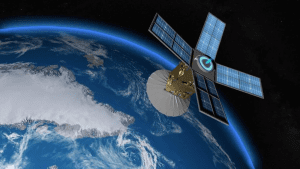What are nano satellites
Nano satellites, commonly referred to as nanosats, are compact spacecraft weighing between 1 and 10 kilograms. Designed for specific missions, these small satellites have become a vital part of modern space exploration and technology due to their affordability, versatility, and efficiency.

Key features of nano satellites
Lightweight and compact design
The small size of nano satellites allows them to be launched in large numbers, often as secondary payloads. Their lightweight nature reduces launch costs and simplifies deployment, making space more accessible to startups, universities, and smaller organizations.
High adaptability
Nano satellites can be equipped with a wide range of payloads, including cameras, sensors, and communication modules. This adaptability enables them to perform various functions, such as Earth observation, data relay, and scientific experimentation.
Short development cycles
The streamlined design and production process of nano satellites allow for shorter development times compared to traditional satellites. This agility makes them ideal for testing new technologies and addressing time-sensitive needs.
Applications of nano satellites
Earth monitoring and remote sensing
Nano satellites play a critical role in observing environmental changes, monitoring natural disasters, and managing agricultural resources. Their imaging capabilities provide valuable data for industries like forestry, urban planning, and climate science.
Enhancing global communication
Nano satellites are key contributors to expanding global communication networks. By forming constellations, they improve internet connectivity, particularly in underserved regions, and support real-time data transmission for various sectors.
Scientific and educational missions
Universities and research institutions leverage nano satellites for educational purposes and scientific studies. These missions include testing new technologies, conducting microgravity experiments, and observing astronomical phenomena.
Defense and security applications
Governments use nano satellites for surveillance, secure communication, and reconnaissance. Their ability to provide high-resolution imaging and real-time data enhances national security capabilities.
Advantages of nano satellites
Cost effectiveness
Nano satellites drastically lower the financial barriers to entering the space industry. Their production and launch costs are significantly lower than those of larger satellites, enabling wider participation in space missions.
Scalability through constellations
Nano satellites are often deployed in constellations, creating networks that provide global coverage for communication, navigation, and Earth observation. These constellations are scalable, offering flexibility in mission design and implementation.
Driving technological innovation
The development of nano satellites has spurred advancements in miniaturized components, including sensors, cameras, and propulsion systems. These innovations benefit the entire space industry by making space technologies more efficient and compact.
Challenges and future prospects of nano satellites
Limited capabilities due to size
The small size of nano satellites can limit their payload capacity and power generation. However, advancements in miniaturization and energy storage technologies are gradually addressing these limitations.
Orbital debris management
The increasing number of nano satellites raises concerns about space debris. Adopting sustainable practices, such as deploying deorbiting systems and adhering to space traffic management guidelines, is essential for long-term space exploration.
Emerging trends in propulsion and autonomy
Innovations in propulsion systems are enhancing the maneuverability of nano satellites, enabling more precise orbit adjustments. Autonomous operation capabilities are also improving, reducing reliance on ground control and increasing mission efficiency.
The growing impact of nano satellites
Nano satellites are transforming the way we approach space missions. Their cost effectiveness, versatility, and rapid development cycles make them a cornerstone of modern space exploration and technology. As innovation continues, nano satellites are expected to play an even more significant role in advancing global communication, scientific discovery, and environmental monitoring. Their potential to democratize access to space ensures that they will remain a critical part of the future of space technology.
